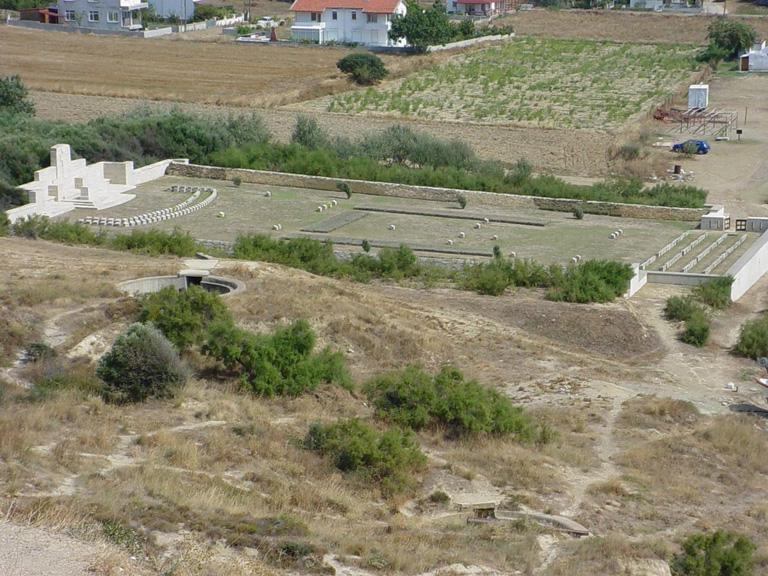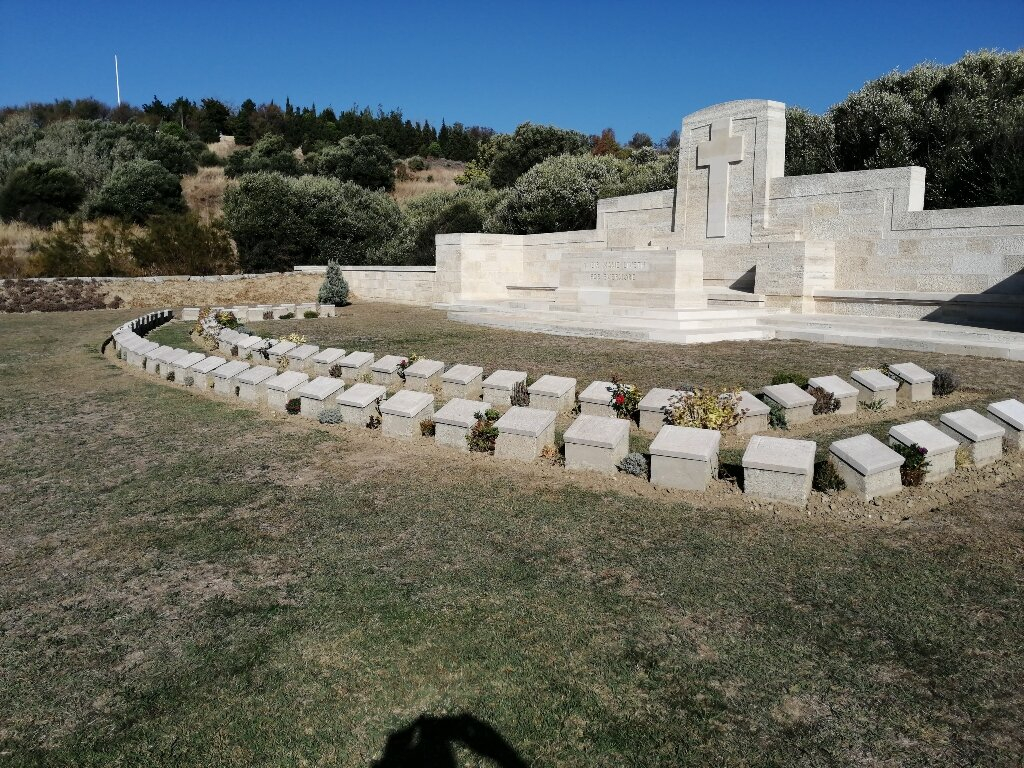V Beach Cemetery
- Country Turkey (including Gallipoli)
- Total identified casualties 216 Find these casualties
- Identified casualties from First World War
- GPS Coordinates Latitude: 40.04356, Longitude: 26.18371
PLEASE NOTE
December 2023 – Adverse weather conditions have caused damage to the cemetery entrance way. We are currently working to rectify this, but access is still possible for visitors.
Location information
The Anzac and Suvla cemeteries are first signposted from the left hand junction of the Eceabat - Bigali Road. From this junction you travel into the main Anzac area. Follow the road to Helles opposite the Kabatepe Museum. After 14.2 km's, take a right turn at the 'T' junction and after 14.3 km's take the left fork. After a total of 23.8 km's you will find a short track to the cemetery which is on the beach. The Cemetery is at the bottom of the grassy slope that rises to the cliff edge between Sedd el Bahr village and Cape Helles.
Visiting information
The Cemetery is permanently open and may be visited at any time.
Please note that in the absence of a cemetery register, visitors are advised to locate the Grave/Memorial reference before visiting. This information can be found in the CASUALTY RECORDS within this page.
For further information and enquiries please contact enquiries@cwgc.org
History information
The eight month campaign in Gallipoli was fought by Commonwealth and French forces in an attempt to force Turkey out of the war, to relieve the deadlock of the Western Front in France and Belgium, and to open a supply route to Russia through the Dardanelles and the Black Sea.
The Allies landed on the peninsula on 25-26 April 1915; the 29th Division at Cape Helles in the south and the Australian and New Zealand Corps north of Gaba Tepe on the west coast, an area soon known as Anzac.
At Helles, the 29th Division landed troops at 'S', 'V', 'W', 'X' and 'Y' Beaches, five small coves at or near the southern end of the peninsula. The landing at 'V' Beach was to be made by boats containing three companies of the 1st Royal Dublin Fusiliers, followed by the collier 'River Clyde' with the rest of the Dublins, the 1st Royal Munster Fusiliers, half the 2nd Hampshire Regiment and other troops. The place was very strongly fortified and heavy casualties were sustained during the landing.
On the morning of 26 April, Lieutenant Colonel Charles Doughty-Wylie and Captain Garth Walford led the survivors on the beach to the capture of Sedd el Bahr village and the old castle above it. Both won the Victoria Cross but were killed during the fight (Captain Walford is buried at V Beach, Colonel Doughty-Wylie is buried in an isolated grave on the spot where he was killed). That evening, the main body of the French Corps began to land at 'V' Beach and after the following day, the front line had advanced about three kilometres beyond it.
The cemetery was used during April and May 1915 and 13 graves were brought in after the Armistice for burial in Row O.
There are now 696 servicemen of the First World War buried or commemorated in this cemetery. 480 of the burials are unidentified but special memorials commemorate 196 officers and men, nearly all belonging to the units which landed on 25 April, known or believed to be buried among them.




